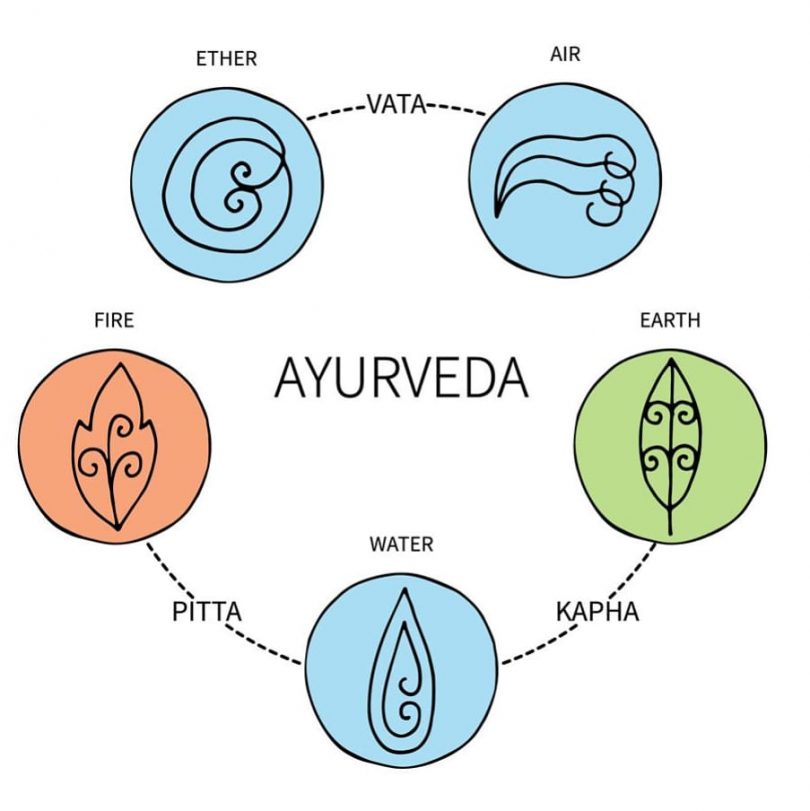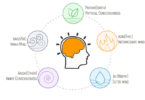It is always believed by ancient cultures that the whole universe is made up of five elements. According to Indian philosophy like Sankhya darshan – these five elements of universe are Akasha (space), Vayu (air), Agni (fire), Jal (water), and Prithvi (earth).
Although in Chinese philosophy these five elements are – wood, fire, earth, metal, and water which is believed to be the foundational elements of everything in the universe.
These are not only five elements of universe they are also five elements of nature. We are the part of nature thus they are also five elements of human body. Though we are most of the time unaware of their presence around us but they are everywhere and constantly affecting us in unseen way.
These all five elements are connected with each other as our life, so even they can be understood as five elements of life.
The five elements in Ayurveda
Ayurveda also believes that everything in this universe is made up of five basic elements. These five elements collectively called Panchmahabhuta. The concept of Panchmahabhuta (Five elements) is the foundation of Ayurveda.
According to Ayurveda all living and non-living things on earth, including humans are consist of these five elements in varying degrees.
Ayurveda talks about three types of body constitution VATA, PITTA, and KAPHA together known as Tridoshas. This tri-dosha are the combination of five elements of nature. Any imbalance in these five elements also imbalance the dosha, imbalance in tri-dosha leads to diseases. Thus understanding of these five elements help in building a healthy lifestyle.
Vata – air + space
Pitta – fire + water
Kapha – earth + water
The Element of Akasa (Ether)
Akasha tattwa is a Sanskrit word translated as ether or space element. Among the five elements space is the most subtle element. Space (akasha tattwa) is the emptiness, without it matter can not exist.
It represents the nature of the void and its main sense attribute is sound. The concept of location and distance are related with the concept of space.
In the human body space can be related with the lungs, the nostrils, the mouth, the stomach different systems of the body for example, digestive systems, respiratory system, circulatory systems, Lymphatic system cells etc. which can be considered to be derived from the ether.
The Element of Vayu (Air)
Vayu tattwa (Air element) is the next cosmic element, the element of movement and formlessness. It is also a subtle element after space. Air element evolves from space element thus its main sense attribute are sound and touch. This is the element associated with Pranyama practices.
Within the human body, air manifests itself as movement of muscles, heart pulsations, expansion and contraction of lungs and electrical movements of nerves.
The Element of Agni (Fire)
Agni tattwa (fire element) is next after air and space elements, the element of transformation and heat. Fire element is a grosser element than air and space but subtle than water and earth. The main sense attribute of Agni is vision but sound and touch are inherited because Agni element evolves from vayu and space.
In our body, the fire is responsible for digestion, body temperature,vision, exchange of energies, thinking and intellect and all kind of metabolism.
Jal or Apa tattwa (water element)
Jal or Apa (water element) is next element. It is the element of liquidity and adaptivity. The main sense attribute of water is taste but sound, touch and vision are inherited as it evolves from earlier elements. In the universe water is present in the form of ocean, river and rain.
In the human body water has most percentage and related to all kind fluid. Water is present in the body in the form of blood, digestive and salivary fluids, in the mucus membranes, hormones, sweat etc. Water is the sea of life within us.
Prithvi tattwa (Earth element)
Prithvi tattwa or the Earth element is the fifth and last element in raw. It is the element which holds all living and nonliving substance therefore it is the element of stability and structure. It is most gross element among all five elements.
The main sense attribute of earth is smell with inherited attribute as it evolves from earlier elements.Similarly, in the human body, earth is responsible for the solid structures – bones, muscles, tendons, ligament, cartilage, cells, skin, nails and hair.
Ayurveda regards these five basic elements as manifestations of universal energy through the human body and its sensory experiences. The proper understanding of these concepts can help us bring our body into perfect harmony with its conscious mind.





